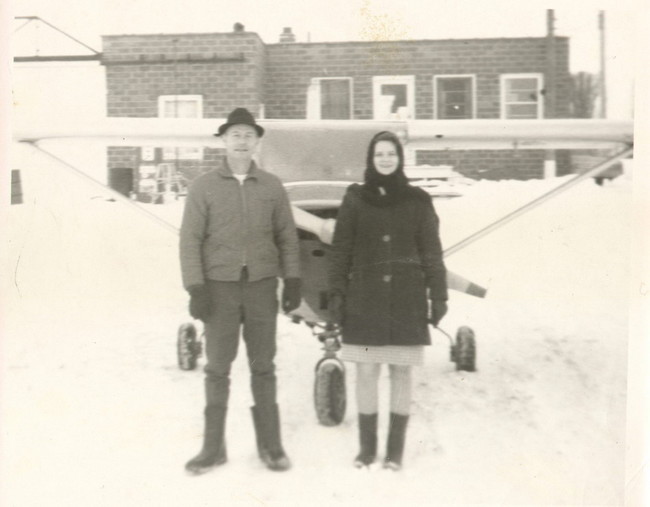Snow (any contaminated surface actually) can be troublesome.
If the snow is dry, powder, not over 4" thick, on top of pavement...then it's not usually a problem. Unless the pavement has a thin 1/4" coating of ice on it before the snow fell.

Or if it's on a surface that was previously plowed irregularly. (Hitting a ridge that's hidden beneath a smooth cover of new snow can lead to ground-loops.)
"Braking action" reports are always suspect as well. Sometimes even the airport authorities think they're helping you by telling you it's better (or worse) than it actually is. (They either think you really want to land there but you might be a commercial operator who needs a certain favorable report....so they report the braking action to be as good as they think you need to legally land.... .... or they think they're helping you by telling you it's worse than actual if they suspect you aren't really experienced or needful of landing there. Either way, they're wrong to report it differently than actual...or they don't actually have the proper equipment to gauge the braking action.)
And just because a previous airplane landed successfully doesn't mean things will work out as well for you as it did for them. (Were they equipped with anti-skid? Were they a much heavier airplane with the capability to break thru the ice layer?... or to compact the ice so it doesn't build up before the wheel and become an ice-dam and cause a ground-loop?
Don't mean to paint only bad pictures... just wanted to give pause to reflect on the possibilites.
Also,... only recently, over the Christmas Holidays, I was at Aspen, and the airplane that landed behind me broke a wheel due to it having been frozen to the brakes, probably as a result of taxying in or out at the previous airport that was slush-covered. Brakes heat up with use and will melt the snow they are pushing through. Then during flight, the melted snow will refreeze possibly making the wheel, brake, caliper, etc. all one nice frozen item. Upon touch-down ... WHAP!
Fortunately for him it only shredded the tire and ruined the wheel/brake assembly. The airplane continued to slide on the wheel straight ahead.
Also, consider the guidelines that are
supposed to be utilized in making reports:
When reporting braking action, any of the following terms may be used:
Good
Medium (medium used to be known as Fair)
Poor (
directional control/steering has become a problem)
Nil - bad or no braking action
Other, more complicated reports use various measuring devices. One type currently used is the "MU" scale. Basically, anytime they start issuing MU reports.... when they start giving numbers..... then it's bad. Don't go there.
If you'd like a copy of the scale:
http://www.faa.gov/news/conferences_eve ... raking.doc
If you read that document, you can see what kind/how much snow usually leads to poor braking.

